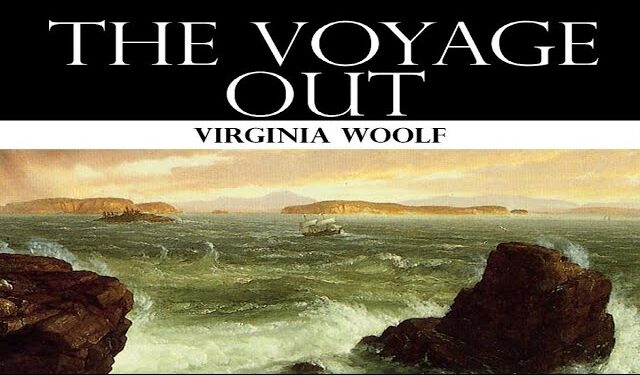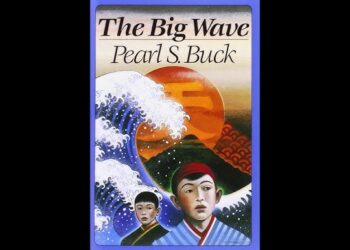Introduction
Summary of The Voyage Out by Virginia Woolf Virginia Woolf’s first novel, “The Voyage Out,” published in 1915, marks the beginning of her exploration of themes such as gender, identity, and the human experience. Set against the backdrop of early 20th-century England and South America, the novel follows the journey of Rachel Vinrace, a young woman embarking on a voyage that is both literal and metaphorical. Through Rachel’s experiences, Woolf delves into the complexities of personal growth, societal expectations, and the search for self-identity.
Summary of The Voyage Out by Virginia Woolf The novel is significant not only for its narrative style and character development but also for its pioneering approach to modernist themes. Woolf’s use of stream-of-consciousness techniques and her focus on the inner lives of her characters allow readers to engage deeply with their thoughts and emotions. “The Voyage Out” serves as a precursor to Woolf’s later, more acclaimed works, establishing her as a crucial voice in modernist literature.
Summary
1. Setting and Context
The story begins in England, primarily focusing on the life of Rachel Vinrace, a sheltered young woman from a wealthy family. Rachel is the daughter of a businessman and has been raised in an environment that emphasizes social status and propriety. Her life has been confined to the rigid expectations of her family and society, which dictates how women should behave and what they should aspire to.Summary of The Voyage Out by Virginia Woolf
Summary of The Voyage Out by Virginia WoolfThe narrative unfolds as Rachel’s father decides to send her on a voyage to South America, ostensibly to help her “find herself” and gain experience beyond the confines of her sheltered existence. The setting transitions from the familiar world of England to the exotic and liberating environment of the fictional town of Santa Marina in South America, symbolizing Rachel’s journey toward self-discovery and independence.
READ MORE
2. Rachel Vinrace: The Protagonist
Summary of The Voyage Out by Virginia WoolfRachel Vinrace is depicted as a complex character struggling with her identity and the expectations placed upon her as a woman. She embodies the conflict between societal norms and her desire for freedom and self-expression. Woolf paints Rachel as curious, intelligent, and sensitive, qualities that make her more aware of the limitations imposed by her upbringing.
As Rachel embarks on her journey, she is accompanied by her father and a group of other travelers. Among them are characters that will play significant roles in her development, including the enigmatic and somewhat cynical character of Terence Hewet, a writer who becomes a focal point in Rachel’s awakening to the possibilities of life beyond her sheltered existence.Summary of The Voyage Out by Virginia Woolf

3. The Voyage Begins
Summary of The Voyage Out by Virginia Woolf The voyage to South America serves as a turning point for Rachel, as she encounters new ideas, people, and experiences. Woolf intricately describes the interactions among the passengers, highlighting their personalities and relationships. This diverse group includes characters such as:
- Hewet: A writer who represents a more progressive and liberated perspective, challenging Rachel’s traditional views.
- Clarissa Dalloway: A fellow traveler who becomes a confidante and a source of inspiration for Rachel, embodying the modern woman’s struggle for autonomy.
- Mr. Vinrace: Rachel’s father, who reflects the patriarchal values that confine women to certain roles.
Summary of The Voyage Out by Virginia Woolf As the ship sails toward South America, Rachel is exposed to discussions about art, literature, and philosophy, which broaden her understanding of the world and ignite her desire for a life filled with meaning and creativity.
4. Arrival in Santa Marina
Upon arrival in Santa Marina, the lush landscape and vibrant culture offer Rachel a stark contrast to her life in England. The town symbolizes a space of freedom and potential, where societal norms are less rigid, allowing her to explore her identity more freely. Rachel finds herself enchanted by the beauty of her surroundings and the people she meets.
In Santa Marina, Rachel becomes more acquainted with her fellow travelers, and her relationship with Hewet deepens. Their conversations reveal the complexities of love, ambition, and the quest for authenticity. Rachel’s growing affection for Hewet challenges her preconceived notions of romance and personal fulfillment, leading her to question her place in the world.
READ MORE
5. Themes of Gender and Identity
Summary of The Voyage Out by Virginia Woolf Woolf intricately weaves themes of gender and identity throughout the novel. Rachel’s journey reflects the struggle of women in the early 20th century to assert their independence in a male-dominated society. The conversations among the characters often touch upon the limitations placed on women and the societal expectations that dictate their lives.
Through Rachel’s experiences, Woolf critiques the constraints of traditional gender roles, highlighting the internal conflicts faced by women who yearn for autonomy and self-expression. Rachel’s quest for identity becomes a microcosm of the larger feminist movement, emphasizing the need for women to carve their own paths and challenge societal norms.Summary of The Voyage Out by Virginia Woolf
6. Rachel’s Personal Growth
As Rachel navigates her surroundings, she undergoes significant personal growth. The interactions with various characters, particularly with Hewet, prompt her to confront her desires, fears, and aspirations. Woolf skillfully captures Rachel’s inner thoughts, allowing readers to witness her transformation from a naive girl into a woman grappling with her identity.
Rachel’s awakening is marked by moments of self-reflection and realization, as she begins to understand the limitations imposed by her upbringing and the potential for a life of fulfillment. Her journey becomes one of self-discovery, where she learns to embrace her individuality and question the values that have been instilled in her.
7. Love and Relationships
The theme of love is central to Rachel’s journey. Her burgeoning relationship with Hewet serves as a catalyst for her self-discovery. Through their conversations and interactions, Rachel begins to understand the complexities of love and the challenges of intimacy. Woolf explores the tension between romantic desire and the quest for personal identity, illustrating how love can both liberate and confine.
Rachel’s experiences with love also reflect the broader societal expectations of women. As she grapples with her feelings for Hewet, she is forced to confront the reality of her choices and the consequences they carry. Woolf poignantly captures the emotional intricacies of relationships, emphasizing the struggles individuals face in seeking connection while maintaining their sense of self.
8. The Return Journey
As the story unfolds, the mood shifts, and the novel takes a more somber turn. Rachel’s voyage becomes increasingly fraught with challenges, leading to pivotal moments that force her to confront the realities of her choices. The return journey becomes a metaphor for the inevitable return to societal expectations and the constraints of her upbringing.
Woolf uses this journey to highlight the tension between personal aspirations and the weight of familial obligations. As Rachel grapples with her evolving identity, she must reconcile her desires with the expectations of her family and society.
9. Tragedy and Loss
The climax of the novel is marked by tragedy, which serves as a poignant reminder of the fragility of life and the unpredictability of human experience. Rachel’s journey takes a heartbreaking turn, leading to a profound loss that shatters her world and forces her to reevaluate her identity and aspirations.
Woolf’s exploration of tragedy adds depth to the narrative, illustrating the complexities of human emotions and the impact of external forces on individual lives. The loss Rachel experiences becomes a turning point, shaping her understanding of love, identity, and the human condition.
10. Conclusion and Reflection
The novel concludes with a sense of ambiguity, leaving readers to reflect on Rachel’s journey and the questions it raises about identity, love, and the search for meaning. Woolf’s exploration of these themes resonates deeply, inviting readers to consider their own experiences and the societal constructs that shape their lives.
In “The Voyage Out,” Woolf masterfully combines rich character development, lyrical prose, and profound insights into the human experience. The novel stands as a testament to the complexities of identity and the quest for self-discovery, solidifying Woolf’s place as a pioneering voice in modernist literature.

Conclusion
“The Voyage Out” is a powerful exploration of the journey toward self-discovery and the complexities of human relationships. Through the character of Rachel Vinrace, Virginia Woolf delves into themes of gender, identity, and the impact of societal expectations on personal aspirations. The novel’s rich tapestry of characters and evocative settings invites readers to engage deeply with the text and reflect on their own experiences of love, loss, and the quest for meaning.
FAQ
1. What is the main theme of “The Voyage Out”?
The main theme is the journey of self-discovery and the struggle for identity, particularly for women navigating societal expectations in the early 20th century.
2. Who is the protagonist of the novel?
The protagonist is Rachel Vinrace, a young woman seeking to assert her independence and find her place in the world.
3. How does Woolf portray gender issues in the novel?
Woolf critiques traditional gender roles and explores the internal conflicts faced by women who aspire for autonomy in a male-dominated society.
4. What role does the setting play in the story?
The contrasting settings of England and South America symbolize Rachel’s journey toward self-discovery and the challenges she faces in reconciling her identity with societal expectations.
5. How does Rachel’s relationship with Hewet evolve throughout the novel?
Rachel’s relationship with Hewet serves as a catalyst for her self-discovery, highlighting the complexities of love and the tension between personal identity and romantic desire.
6. What is the significance of the title “The Voyage Out”?
The title symbolizes Rachel’s physical journey to South America and her metaphorical journey toward self-discovery and independence.
7. How does the novel address the theme of loss?
Tragedy and loss become pivotal moments in Rachel’s journey, shaping her understanding of love, identity, and the complexities of the human experience.
8. What literary techniques does Woolf employ in the novel?
Woolf employs stream-of-consciousness techniques and rich imagery to delve into the inner thoughts and emotions of her characters, enhancing the reader’s connection to their experiences.
9. How does “The Voyage Out” compare to Woolf’s later works?
While it is Woolf’s first novel, “The Voyage Out” establishes many themes and stylistic approaches that she would explore further in her later works, such as “Mrs. Dalloway” and “To the Lighthouse.”
10. What can readers take away from “The Voyage Out”?
Readers can reflect on the complexities of identity, the importance of personal growth, and the impact of societal expectations on individual aspirations, ultimately inspiring them to seek their own paths of self-discovery.
READ MORE

















